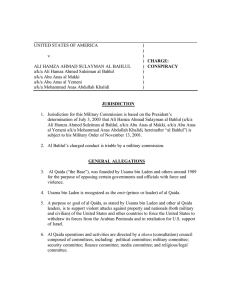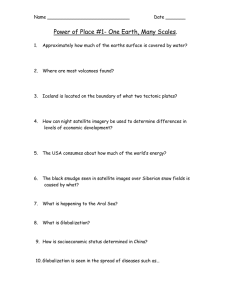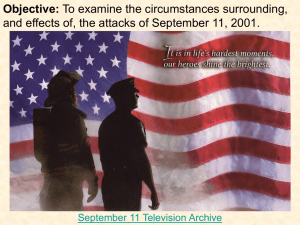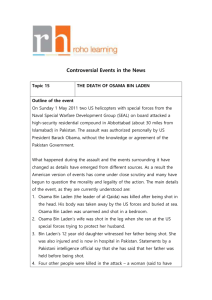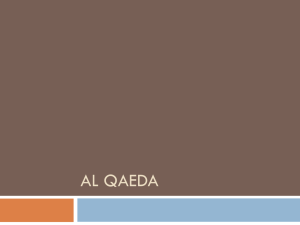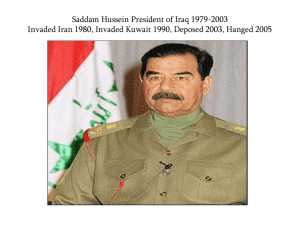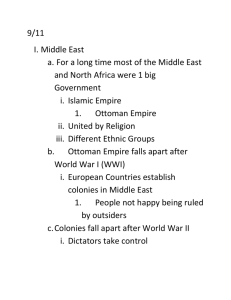UNITED STATES OF AMERICA ) v.
advertisement
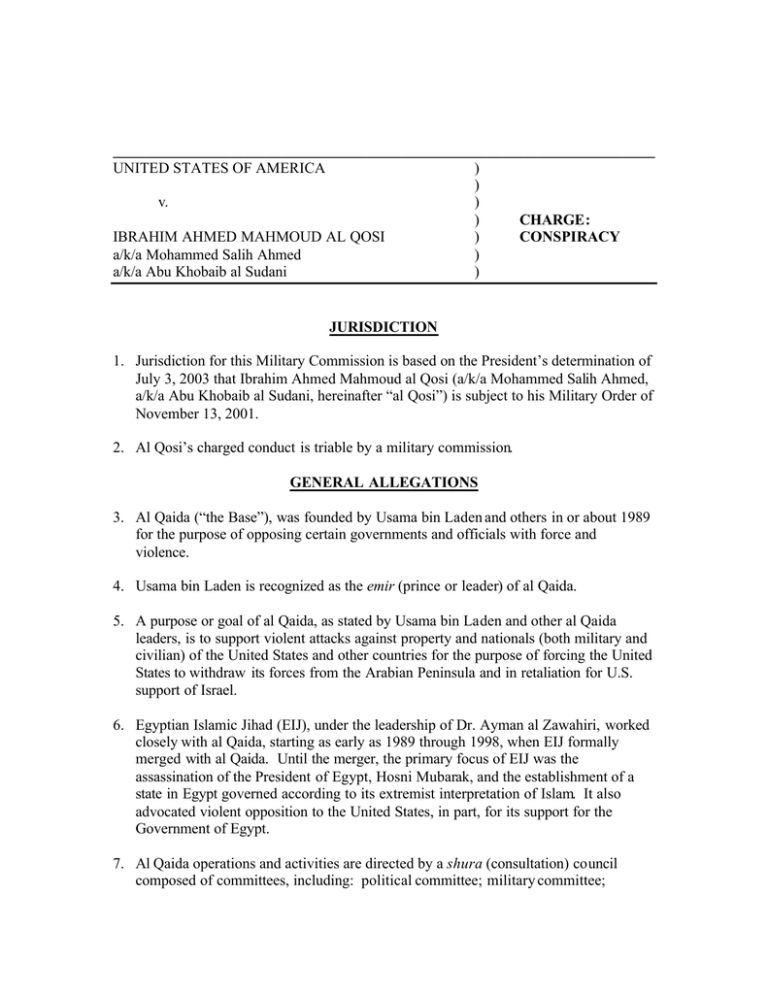
________________________________________________________________________ UNITED STATES OF AMERICA ) ) v. ) ) CHARGE: IBRAHIM AHMED MAHMOUD AL QOSI ) CONSPIRACY a/k/a Mohammed Salih Ahmed ) a/k/a Abu Khobaib al Sudani ) JURISDICTION 1. Jurisdiction for this Military Commission is based on the President’s determination of July 3, 2003 that Ibrahim Ahmed Mahmoud al Qosi (a/k/a Mohammed Salih Ahmed, a/k/a Abu Khobaib al Sudani, hereinafter “al Qosi”) is subject to his Military Order of November 13, 2001. 2. Al Qosi’s charged conduct is triable by a military commission. GENERAL ALLEGATIONS 3. Al Qaida (“the Base”), was founded by Usama bin Laden and others in or about 1989 for the purpose of opposing certain governments and officials with force and violence. 4. Usama bin Laden is recognized as the emir (prince or leader) of al Qaida. 5. A purpose or goal of al Qaida, as stated by Usama bin Laden and other al Qaida leaders, is to support violent attacks against property and nationals (both military and civilian) of the United States and other countries for the purpose of forcing the United States to withdraw its forces from the Arabian Peninsula and in retaliation for U.S. support of Israel. 6. Egyptian Islamic Jihad (EIJ), under the leadership of Dr. Ayman al Zawahiri, worked closely with al Qaida, starting as early as 1989 through 1998, when EIJ formally merged with al Qaida. Until the merger, the primary focus of EIJ was the assassination of the President of Egypt, Hosni Mubarak, and the establishment of a state in Egypt governed according to its extremist interpretation of Islam. It also advocated violent opposition to the United States, in part, for its support for the Government of Egypt. 7. Al Qaida operations and activities are directed by a shura (consultation) council composed of committees, including: political committee; military committee; security committee; finance committee; media committee; and religious/legal committee. 8. Between 1989 and 2001, al Qaida established training camps, guest houses, and business operations in Afghanistan, Pakistan, the Sudan, Somalia, and other countries for the purpose of training and supporting violent attacks against property and nationals (both military and civilian) of the United States and other countries. 9. In 1992 and 1993, Usama bin Laden and other members of al Qaida began making statements indicating that attacks on U.S. forces were proper to drive them out of the Arabian Peninsula and Somalia. 10. In 1992 and 1993, al Qaida supported violent opposition of U.S. property and nationals by, among other things, transporting personnel, weapons, explosives, and ammunition to Yemen, Saudi Arabia, Somalia, and other countries. 11. In or around 1994, al Qaida’s shura council met and discussed whether al Qaida should support an EIJ effort to assassinate Egyptian President Hosni Mubarek. After discussion, the council determined that al Qaida would support such an operation. On June 25, 1995, assailants affiliated with EIJ and the associated group Gamaat al Islamiyya attempted to assassinate President Hosni Mubarak in Addis Ababa, Ethiopia. 12. In August of 1996, Usama bin Laden issued a public “Declaration of Jihad Against the Americans,” in which he vowed that al Qaida would take violent actions against the United States unless American military forces withdrew from Saudi Arabia. 13. In February of 1998, Usama bin Laden, Ayman al Zawahiri, and others endorsed a fatwa (purported ruling on Islamic law) under the banner of “International Islamic Front for Fighting Jews and Crusaders.” In this fatwa, it was declared that all Muslims able to do so “should kill Americans and their allies, both civilian and military. ” 14. On or about May 29, 1998, Usama bin Laden issued a statement entitled “The Nuclear Bomb of Islam,” under the banner of the “International Islamic Front for Fighting Jews and Crusaders,” in which he stated that “it is the duty of the Muslims to prepare as much force as possible to terrorize the enemies of God.” 15. On or about August 7, 1998, members or associates of al Qaida, known and unknown, assisted in the planning, preparation and commission of the bombing of the United States Embassies in Kenya and Tanzania. 16. On or about October 12, 2000, members or associates of al Qaida, known and unknown, assisted in the planning, preparation and commission of the bombing of the USS COLE in Yemen. 2 17. On or about September 11, 2001, members or associates of al Qaida, known and unknown, assisted in the planning, preparation and commission of the attacks on the United States. CHARGE: CONSPIRACY 18. Ibrahim Ahmed Mahmoud al Qosi (a/k/a Mohammed Salih Ahmed, a/k/a Abu Khobaib al Sudani, hereinafter “al Qosi”), in Afghanistan, Pakistan, the Sudan, Ethiopia, Yemen, and other countries, from on or about June 1989 to on or about December 2001, willfully and knowingly joined an enterprise of persons who shared a common criminal purpose and conspired and agreed with Usama bin Laden, Saif al Adel, Dr. Ayman al Zawahiri (a/k/a “the Doctor”), Abu Obeidah al Banshiri, Muhammad Atef (a/k/a Abu Hafs al Masri, hereinafter “Abu Hafs”), Sheik h Sayeed al Masri, Mohammed Suliman al Nalfi, Jamal Ahmed Mohammed al Fadl, Salem Ahmed Salem Hamdan (a/k/a Saqr al Jadawi, hereinafter “Hamdan”), and other members and associates of the al Qaida organization, known and unknown, to commit the following offenses triable by military commission: attacking civilians; attacking civilian objects; murder by an unprivileged belligerent; destruction of property by an unprivileged belligerent; and terrorism, said conduct being in the context of and associated with armed conflict. 19. In furtherance of this enterprise and conspiracy, al Qosi and other members of al Qaida committed the following overt acts: a. In 1989, while in the Sudan, al Qosi, after learning the nature and purpose of al Qaida, became a member and remained a member of al Qaida until his capture in December 2001. b. From about June 1989 to about October 1990, in his capacity as an al Qaida member, al Qosi passed information between members of terrorist cells operating within the Sudan and provided logistical support such as food, shelter and clothing for members of these terrorist cells. c. In or about October 1990, al Qaida member Mohammed Suliman al Nalfi arranged for and paid, using al Qaida funds, al Qosi’s travel from the Sudan into Afghanistan. d. In Afghanistan, around late 1990 to early 1991, al Qosi attended and completed the al Farouq camp, a training camp sponsored by al Qaida. Lasting approximately 45 days, this training included, among other things, physical training, military tactics, and weapons instruction and firing on a variety of individual and crew-served weapons. e. In or about September 1991, after participating for a period of time in the fighting in Afghanistan, al Qosi assumed a position as an accountant in al Qaida’s Mektabh al Muhassiba (accounting office) in Peshawar, Pakistan. 3 He assumed the position of deputy chief financial officer, reporting directly to Sheikh Sayeed al Masri, chief financial officer and leader of al Qaida’s finance committee. Due to his accounting background, al Qosi was put in charge of managing donated money from non- governmental and charitable organizations and distributing it for salaries, travel, and support of al Qaida members, support of terrorist training camps and operations, and other al Qaida expenses. f. From about 1992 through about 1995, al Qosi worked in “Taba Investment Company” (Taba) in the Sudan as an accountant and treasurer. Usama bin Laden established Taba around 1989 as one of a series of businesses intended to provide income to al Qaida for its training and operations, and to provide cover for the procurement of explosives, weapons and chemicals. Among other activities, al Qosi signed checks on behalf of Usama bin Laden, exchanged money on the black market from Sudanese currency to U.S. dollars, and couriered money on behalf of al Qaida. g. From around 1991 to around 1994, al Qosi assisted in loading and transporting explosives, weapons, and ammunition within and outside of the Sudan. h. In 1994, after a failed assassination attempt of Usama bin Laden in Khartoum, Sudan, Usama bin Laden handpicked al Qosi to serve as a member of his newly formed “bodyguard” force. i. In 1995, al Qosi requested and received permission from Usama bin Laden to travel to Chechnya to fight alongside other Islamic militants against the Russians. Usama bin Laden financed al Qosi’s trip to and from Chechnya. j. In 1996, al Qosi departed Chechnya and sought out Usama bin Laden. Al Qosi located and rejoined Usama bin Laden in the Tora Bora Mountains, Afghanistan. Along with Usama bin Laden and his entourage, al Qosi moved to the “Star of Jihad” compound in Jalalabad, Afghanistan, where al Qosi assisted in logistical support of the compound. This compound eventually moved to Qandahar, Afghanistan. k. From about 1996 until his capture in December 2001, al Qosi served as one of Usama bin Laden’s bodyguards and drivers. When Usama bin Laden traveled, Al Qosi and others in the bodyguard detachment accompanied him. Al Qosi remained armed, providing Usama bin Laden with physical protection, and was a driver for the caravan of vehicles used to transport Usama bin Laden, occasionally driving Usama bin Laden himself. Additionally, al Qosi was responsible for the supplies and cooking for the detachment. 4 l. After being placed on alert by Usama bin Laden in the weeks just before the attacks on the U.S. of September 11, 2001, al Qosi assisted Usama bin Laden and other al Qaida members in mobilizing and evacuating from Qandahar. Al Qosi remained with and assisted Usama bin Laden and other al Qaida leaders before, during, and after the attacks of September 11, 2001. 5
